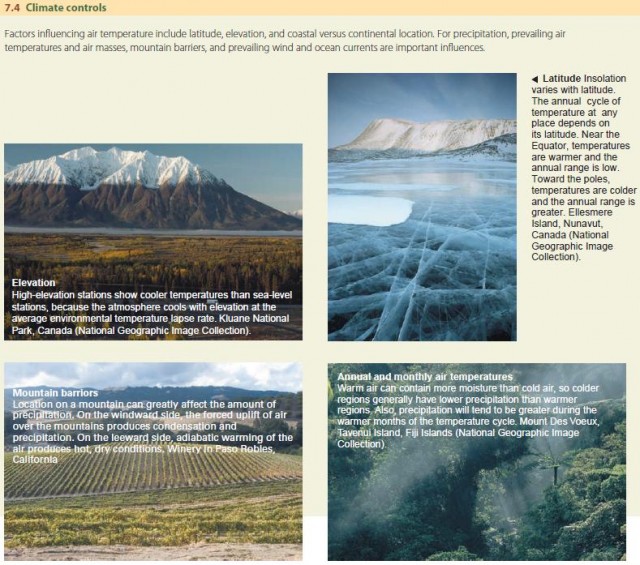Factors Controlling Climate
Climate is the average weather of a region. The primary driving force for weather is the flow of solar energy received by the Earth and atmosphere. Because that energy flow varies on daily cycles with the planet's rotation and on annual cycles with its revolution in orbit, temperature and precipitation also vary on daily and annual cycles.
However, climate includes other time cycles as well, ranging from cycles of several years' duration, such as the cycles imparted by El Nino, to cycles of hundreds of thousands of years, like the cycles of continental glaciation.
In addition to recognizing the time cycles imposed by the flow of solar energy to a given region, a few other principles are very helpful in understanding the global scope of climate. Three major factors influence the annual cycle of air temperature experienced at a location: latitude, coastal versus continental location, and elevation (Figure 7.4).

For precipitation, these same three factors are important, but precipitation is also affected by annual and monthly air temperatures, prevailing air masses, relation to mountain barriers, position of persistent high- and low-pressure centers, and prevailing wind and ocean currents.
Keeping these key ideas in mind as you read this chapter will help make the climates we discuss easier to understand and explain.